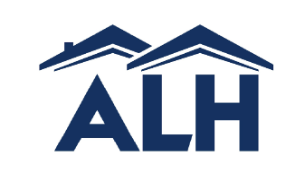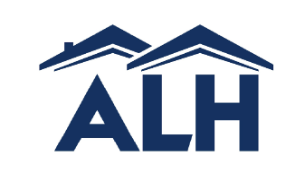Title Page
-
Company name
-
Company representative
-
Location
-
Conducted on
-
Prepared by
INTRODUCTION
Scope of Evaluation
-
The scope of the Client WHS Evaluation is limited to the examination of information sourced, and observations made at the time of the evaluation. The principal objectives of this report are to:
• Evaluate the host employers' work health and safety documentation to determine an appropriate level of understanding of WHS issues and legislation required to manage WHS risks associated with the operational activities of the business.
• Determine if the host employer provides and implements practical systems and processes for managing WHS risks
• Identify good practices and opportunities for improvement based on operations specific to the business.
Having considered the matters discussed during our visit this WHS report has been finalised to provide an overview of Onpoint 365's observations.
Confidentiality Statement
-
In order to maintain the integrity and credibility of the risk analysis processes and to protect the parties involved, it is understood that Onpoint 365 and its representatives will not divulge to unauthorised persons any information obtained during this WHS Assessment unless legally obliged to do so.
Copyright 2023
-
All rights reserved. No part of this document may be reproduced or transmitted in any form by any means, electronic or mechanical, including photocopying and recording, or by an information storage or retrieval system, accept as may be permitted, in writing, by Onpoint 365.
Client WHS Evaluation
WHS Systems & Processes
-
Documented standards of behaviour exist for the prevention of and response to bullying, sexual harassment, aggression and violence, and alcohol and other drugs.
-
A grievance procedure is available to workers to raise workplace grievances.
-
Information on services to support mental health in the workplace is provided.
-
There is a process in place for regular consultation with workers on health and safety, involving discussions and feedback.
-
There is a process in place to proactively identify hazards in the workplace, which may include regular workplace inspections, risk assessments, and hazard reports from the workforce.
-
Psychosocial risks have been identified, and a plan is in place to manage these risks, e.g., psychosocial risk prevention plan, or other relevant documentation that demonstrates the identification and implementation of controls for risks such as job demands, support, role clarity, workplace relationships, etc., be obtained.
-
Safe systems have been established to manage the risks associated with working from home.
-
Safe systems have been established to manage the risks associated with working alone.
-
Safe systems have been implemented to manage the risks associated with outdoor work, which includes working in the heat, storms, and exposure to poisonous or toxic flora and fauna such as insects, spiders, snakes, and plants.
-
Safe systems have been established to manage the risks associated with work-related driving.
-
Safe systems have been established to manage the risks associated with work-related travel.
-
A formal incident reporting process is in place that mandates the reporting and investigation of all incidents.
-
Emergency plans, such as those for fire and medical situations, are established and regularly tested.
-
First aid equipment is available at the workplace, and all workers have access to the equipment and facilities for administering first aid.
-
A sufficient number of workers have been trained to administer first aid, or there are enough other individuals in the workplace who have been trained to administer first aid and are readily accessible to workers.*
-
* The following ratios are recommended: low-risk workplaces 1:50, high-risk workplaces 1:25, remote high-risk workplaces 1:10. First aiders should attend training on a regular basis to refresh their first aid knowledge and skills and to confirm their competence to provide first aid. Refresher training in CPR should be carried out annually and first aid qualifications should be renewed every three years.
Induction & Training
-
A WHS Induction Program is available, and all on-hire workers will receive an induction on their first day of assignment.
-
On-hire workers will be provided with training on how to safely perform their job tasks.
Maintaining a safe and healthy workplace
-
A system is in place to ensure regular health and safety checks are performed e.g. monthly workplace WHS inspections
Outcome
-
If you have answered “no” to any of the above criteria you must escalate to the Recruitment Team Manager before the placement of workers.
-
Is all WHS criteria satisfied?
-
Report to Onpoint 365 Recruitment Team Manager
Work Environment Evaluation
Worksite Details
-
Company Name
-
Company Representative
-
Location
-
Conducted on
-
Prepared by
General housekeeping and environment
-
There is adequate lighting and ventilation to safely perform the work.
-
Adequate facilities including toilets, drinking water, washing and eating facilities, are maintained in good working order, are clean, safe and accessible.
-
Floors, stairs and surfaces are designed, installed and maintained for the tasks being undertaken, and do not present a slip, trip or fall risk.
-
Walkways and emergency exits are clear of obstructions.
Hazard Management
-
Work areas are arranged in a suitable manner, and aides are provided to minimise the risks associated with manual tasks.
-
A register containing all hazardous chemicals is prepared and maintained, and Safety Data Sheets for these chemicals are readily available.
-
The electrical equipment appears to be in good condition and has been tested and tagged by a qualified person, ensuring that it is current.
-
The design of chairs and workstations allows for flexibility and adjustability, giving individuals control over how their workspace is set up and organised to meet the changing demands and variety of tasks they perform.
-
There is a traffic management plan in place to separate pedestrians from forklifts and other powered mobile equipment. It should be noted that a painted walkway alone is insufficient to prevent a vehicle from colliding with a pedestrian.
-
Step ladders are designed for the specific task they are being used for and are not domestic rated, and are observed to be in good condition with instructions provided for safe use.
-
The workplace displays evacuation diagrams, and the location of the assembly point is indicated by signs.
-
The location of first aid kits is clearly signposted, and they are easily accessible.
Outcome
-
If you have answered “no” to any of the above criteria you must escalate to the Recruitment Team Manager before the placement of workers.
-
Is all WHS criteria satisfied?
-
Report to Onpoint 365 Recruitment Team Manager














